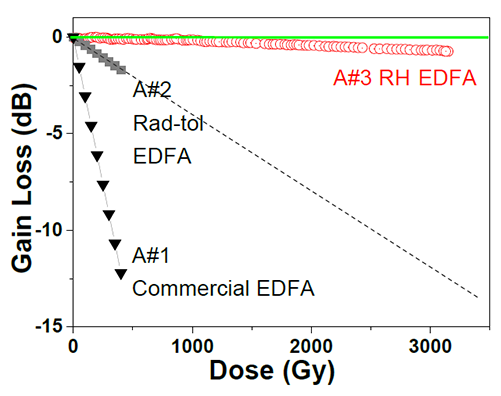LabH6: Optical fibers for amplifiers and lasers
Related Publications
-
Recent advances in radiation-hardened fiber-based technologies for space applications
Journal of Optics – 1 August 2018
In this topical review, the recent progress on radiation-hardened fiber-based technologies is detailed, focusing on examples for space applications. In the first part of the review, we introduce the operational principles of the various fiber-based technologies considered for use in radiation environments: …
Download -
Radiation hardening techniques for Er/Yb doped optical fibers and amplifiers for space application
Optics Express Vol. 20, Issue 8, pp. 8457-8465 (2012)
https://doi.org/10.1364/OE.20.008457 -
Optimized radiation-hardened Erbium Doped Fiber amplifiers for long space missions
Journal of Applied Physics 121, 163104 – 2017
In this work, we developed and exploited simulation tools to optimize the performances of rare earth doped fiber amplifiers (REDFAs) for space missions. To describe these systems, a state-of-the-art model based on the rate equations…
Learn more -
Radiation-hard erbium optical fiber and fiber amplifier for both low- and high-dose space missions
Optics Letters Vol. 39, Issue 9, pp. 2541-2544 (2014)
https://doi.org/10.1364/OL.39.002541



